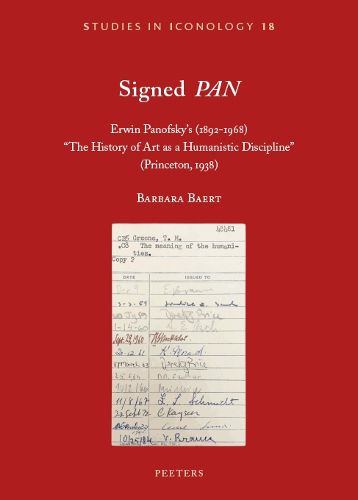Readings Newsletter
Become a Readings Member to make your shopping experience even easier.
Sign in or sign up for free!
You’re not far away from qualifying for FREE standard shipping within Australia
You’ve qualified for FREE standard shipping within Australia
The cart is loading…






In 1935 Erwin Panofsky (1892-1968) was appointed the first
‘permanent member’ of the School of Humanistic Studies (now the School
of Historical Studies) at the Institute for Advanced Study in
Princeton. The famous institute was founded by the American educator
Abraham Flexner (1866-1959). This essay contributes to the
content and context of Panofsky’s important lecture
The History of
Art as a Humanistic Discipline from1938. The publication of that
lecture functioned as a manifesto written by an intellectual
emigre in a new American context. It is thanks to Panofsky
that the locus classicus of iconography, as Irving Lavin
(1927-2019) described the Institute for Advanced Study, received the
compelling arguments for an art history that deserves to be counted
among the humanities. A close reading of the text and an analysis of
its impact can still teach us something about the origins
and development of the Art Historical field and Iconological Studies
today.
$9.00 standard shipping within Australia
FREE standard shipping within Australia for orders over $100.00
Express & International shipping calculated at checkout
In 1935 Erwin Panofsky (1892-1968) was appointed the first
‘permanent member’ of the School of Humanistic Studies (now the School
of Historical Studies) at the Institute for Advanced Study in
Princeton. The famous institute was founded by the American educator
Abraham Flexner (1866-1959). This essay contributes to the
content and context of Panofsky’s important lecture
The History of
Art as a Humanistic Discipline from1938. The publication of that
lecture functioned as a manifesto written by an intellectual
emigre in a new American context. It is thanks to Panofsky
that the locus classicus of iconography, as Irving Lavin
(1927-2019) described the Institute for Advanced Study, received the
compelling arguments for an art history that deserves to be counted
among the humanities. A close reading of the text and an analysis of
its impact can still teach us something about the origins
and development of the Art Historical field and Iconological Studies
today.